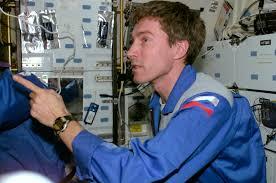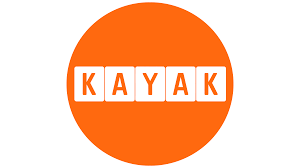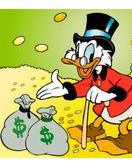Although all missions in outer space have not been touristic, Soviet astronaut Sergei Krikalev can be considered the first space tourist.
Space tourist and last citizen of the Soviet Union.
Soviet cosmonaut Sergei Krikalev was left in space during the collapse of the Soviet Union in 1991. Unable to return home, he ended up forced to stay in space until further notice, eventually returning to Earth on March 25, 1992. that was after 10 months in orbit, to a place that was very different from what it had been when it left. The Soviet Union had fractured into 15 nations, presidents had changed, and even his hometown of Leningrad had reverted to its former name: St. Petersburg.
Interestingly, at the time, Krikalev was supposed to serve in the military reserves, and a defection order was nearly issued before the military realized their reserve Sergei Krikalev: born for space soldier wasn't even on the planet. Krikalev was called by many "the last citizen of the Soviet Union", as he left Earth as a citizen of the Soviet Union and landed as a citizen of the Russian Federation.
He is one of the most experienced in space and to achieve this, he has had an admirable career, he is an engineer, aviator and military man.
After graduating in 1981, he entered the NPO, the commission that coordinated the space travel of the Soviet Union, where he trained to gain access to space travel with a work process that included long courses in physics, chemistry, applied science, and technology of the ships, but also scuba diving techniques or familiarization with weightlessness in the human centrifuge.
By November 1988 he made the first of his many space flights aboard the Soyuz TM-7, a trip to the Mir space station, which was the result of work carried out by the USSR in conjunction with France.
The mission, in which he assisted as a flight engineer, was accompanied by Commander Aleksandr Volkov, and the Frenchman Jean-Loup Chrétien, with whom he stayed until April 1989 carrying out experiments on board the space station.
Once on the mainland, he is selected for the next flight to the Mir Space Station that would take place in May 1991, for which reason the cosmonaut began training for his great trip in 1990, which would be a cooperation between countries, since that Commander Anatoly Artsebarsky would travel with him, and the British astronaut Helen Sharman, the first non-Soviet woman to make a journey through space.

Sharman stayed only a week at the station and returned to earth, however, Artsebarsky and Krikaliov stayed a few more months working at the station, until October 1991 when the commander left space, exchanging places with Aleksandr Volkov, who would be his partner. of Sergei in the coming months.
Until then, everything was going well, but Krikalov received the news that his stay on the Mir Space Station would be indefinite.
According to Yuri Teplakov, deputy director of Space Missions, the situation was as follows: "Nobody ordered him to stay in space, but the truth is that no one can say that he gladly accepted either"
That is when the journey that would make Sergei Krikalev even more famous began.

He left Earth when the USSR still existed and Mikhail Gorbachev had just made peace with Boris Yeltsin. Reconciliation with the Democrats meant that the reforms would be promoted and the Union would be renewed, granting many more rights to the republics to the detriment of the center.
However, along the way, things would change radically during the months that followed, where the cosmonaut was able to observe and live from space the precariousness in which the USSR was immersed, but also its disintegration, which implied a lack of budget so that he could return to earth.
In a video call with his wife, she confessed that the family was going through financial difficulties, because the devaluation of the ruble meant that, although they enjoyed one of the highest salaries in the USSR, currently it was only equivalent to the salary of a cleaning worker, which was not enough for them to live.
The situation for the USSR was so complex that it even tried to sell the station to its enemies NASA, although they also formed contracts with Coca-Cola so that their astronauts would appear in images drinking one of the favorite drinks of the western world.
Space Tourist for five months
The problems on earth were much more important than bringing an astronaut back to the USSR, which meant that he stayed for more than 10 months in the Mir Space Station, 5 months more than he planned,
On his return trip, he was accompanied by Vólvov and the German Klaus-Dietrich Flade, in a ship that landed in Kazakhstan, but nothing was the same, because as soon as he made landfall, the man who was 33 years old in those years, became the last Soviet citizen in the world.
The return trip, which had been financed by Germany, transported him to another world, one in which his hometown of Leningrad was now called Saint Petersburg and his salary as a flight engineer on a Space Station was not enough to even buy a kilo of meat
His daughter Olga was a newborn when he embarked on the adventure, but by the time he returned, the little girl was already running through her house, one that had belonged to a wealthy family that was now experiencing hardships thanks to the drastic change in the last year in which he had been in space.
Chris Jones indicated in his book "Out of Orbit" that a journalist asked him ""Last year you left the Soviet Union. Now you return to Russia. How do you feel about this drastic change?" and he did not get an answer, the time he had spent in space transported him to another reality, one that not even in the wildest dreams he could have thought
Krikalov returned to space and not once, but several times, this time even spending seasons on the International Space Station (ISS). In fact, he participated in the first crew of the ISS that flew in the year 2000 to begin an unprecedented stage of international collaboration in space.

